Understanding Wood-Destroying Beetles and Their Impact
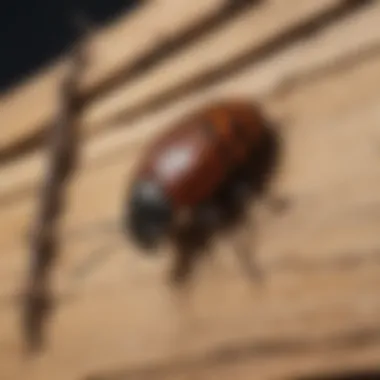
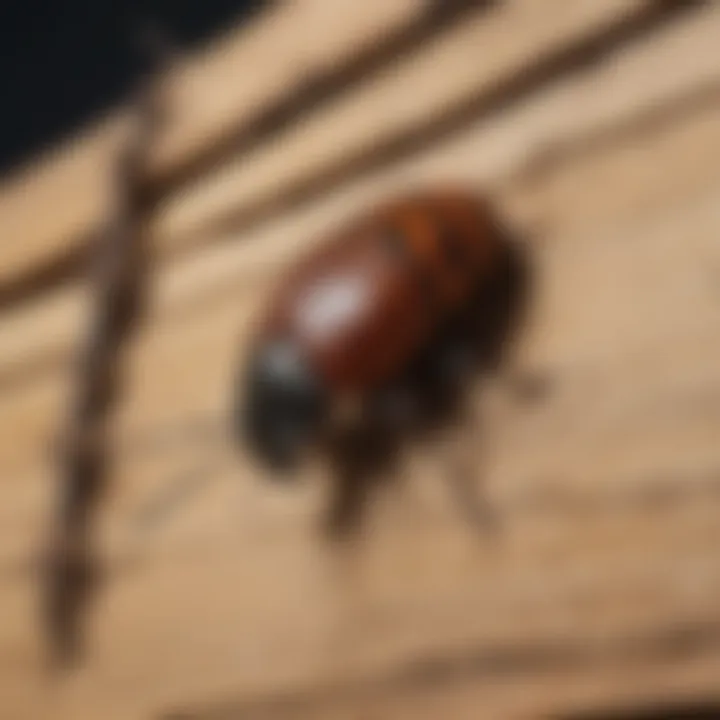
Overview of Research Topic
Brief Background and Context
Wood-destroying beetles are a group of pests often overlooked, despite their significant impact on environments and human structures. These beetles, which include species like the powderpost beetle and the old house borer, play critical roles within their ecosystems. They primarily target wood, which can lead to extensive damage in residential and commercial settings. In many cases, infestations go unnoticed until the damage is considerable, highlighting the need for heightened awareness and understanding of these pests.
The biology of wood-destroying beetles is fascinating, as their lifecycle involves distinct stages including egg, larval, pupal, and adult forms. Each of these stages interacts with wood differently, contributing to damage and decay. Furthermore, studying their behaviors sheds light on their preferences for specific wood types and moisture levels, which is crucial for homeowners, builders, and conservationists alike.
Importance in Current Scientific Landscape
Methodology
Research Design and Approach
Research into wood-destroying beetles involves a multi-faceted approach. Studies often include field surveys to identify beetle presence and assess damage in various settings. This hands-on work is complemented by lab-based research that delves into beetle behavior, reproduction, and lifecycle. Collaborations span several disciplines, from entomology to forestry, aiming to provide a holistic understanding of the issue.
Data Collection Techniques
Various techniques are employed to gather data on wood-destroying beetles. This includes visual inspections of structures, analysis of wood samples, and the use of traps to monitor beetle populations. Surveys often utilize both qualitative observations and quantitative measurements, providing a well-rounded viewpoint.
In addition, interviews with professionals in construction and conservation contribute valuable insights regarding the economic and ecological impacts of these pests. As the data accumulates, it not only informs pest control strategies but also sparks discussions on broader ecological implications.
"Understanding the role of wood-destroying beetles is not just about pest control but engaging with the very fabric of our ecosystems."
By examining these aspects, the article aims to equip readers with comprehensive knowledge about wood-destroying beetles and their profound implications in both ecological and human contexts.
Preface to Wood-Destroying Beetles
Wood-destroying beetles, while they may seem like a minor nuisance, actually play a significant role within both the environment and various human industries. Understanding these fascinating insects is not merely an academic exercise; it holds real-world implications for construction, conservation, and even agriculture. By comprehensively exploring the biology, behaviors, and ecological significance of these beetles, we can better equip ourselves with strategies for management and prevention of infestations.
Knowing how to identify wood-destroying beetles is critical. While it may be tempting to dismiss them as just another pest, the damage they inflict can lead to significant economic and structural consequences. Thus, grasping the fundamentals of their life cycle and habits allows individuals—whether homeowners or professionals in the field—to make informed decisions. This introduction sets the stage for an in-depth exploration, emphasizing that the cost of ignorance can be frighteningly high.
Moreover, recognizing the ecological role of these beetles gives us a lens through which we can appreciate the interconnectedness of ecosystems. After all, the removal of dead or dying wood is essential not just for pest control but also for nutrient cycling and habitat creation for other organisms. This back-and-forth balance hints at something deeper—an intricate web where every player, even wood-destroying beetles, has a part that matters.
Defining Wood-Destroying Beetles
Wood-destroying beetles represent a diverse group of insects that have developed specialized adaptations for living in, feeding on, and reproducing within wood. These beetles embody various species within families such as Cerambycidae (longhorned beetles), Buprestidae (jewel beetles), and Anobiidae (wood-boring beetles). Their wood consumption is not only a means of sustenance but also plays a pivotal role in the decomposition process of forests.
The adults often display distinct physical traits; long, cylindrical bodies with robust mandibles enable them to burrow into wood easily. Notably, their larvae tend to form galleries within the wood, leaving behind telltale signs of their presence. Such defining features highlight not just the biological uniqueness of these beetles but also their potential for structural damage when they invade buildings and wooden structures.
Importance in Ecological Context
"Wood-decomposing organisms, such as beetles, are essential to the nutrient cycle within forest ecosystems."
Secondly, their interactions with other species, including predators and competitors, influence population dynamics. For instance, many birds and mammals depend on larvae as a food source. Therefore, the decline or increase of wood-destroying beetles could have cascading effects throughout the ecosystem.
Lastly, awareness of the ecological implications of these beetles may inform conservation efforts. Rather than seeing them solely as pests, understanding their role in nature encourages a holistic approach to both pest management and environmental stewardship.
Biology and Life Cycle
The study of wood-destroying beetles' biology and life cycle is crucial to understanding how these pests operate and impact their environment. Knowing their biological traits and behaviors enables effective management strategies against infestations. By dissecting their life stages and reproductive habits, one can anticipate infestations, making control methods much more efficient. An insight into their biology not only illuminates how they thrive but also sheds light on potential vulnerabilities that can be exploited in pest management practices.
Morphological Characteristics
Morphological characteristics of wood-destroying beetles can be quite diverse, yet they share some common traits that set them apart. Most notably, these beetles have robust bodies often equipped with a hard exoskeleton that provides structural integrity and protection against predators. The shape can vary widely; some are elongated, while others are more rounded.
Interestingly, many species have distinctive coloration or markings; for example, the powdered post beetle flaunts a dusty, grayish appearance, whereas the old house borer features a more shiny, dark-brown body with unique incisions along its back. Their antennae often resemble combs, which aids in their sensory perceptions, enhancing their ability to locate mates and food sources. Understanding these characteristics is vital when attempting to identify specific species during inspections.
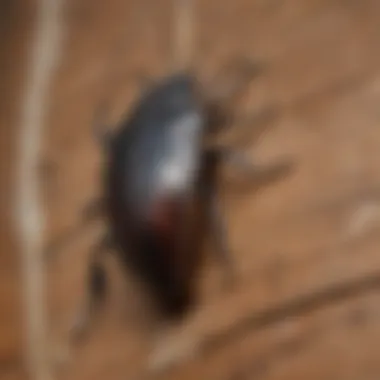
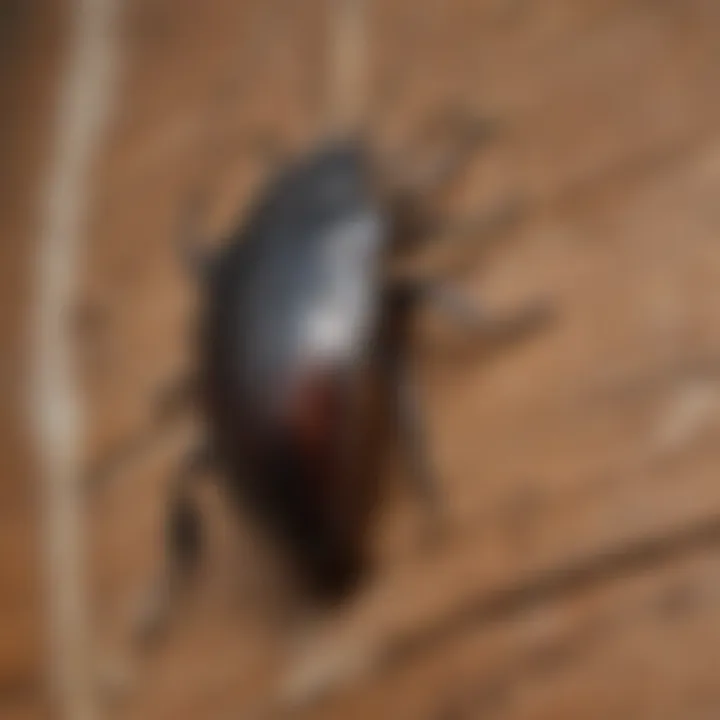
Reproductive Behavior
Wood-destroying beetles exhibit fascinating reproductive behaviors crucial for their survival. Depending on the species, mating rituals can vary, but there’s often a common thread: pheromones play a significant role. During the breeding season, males release specific scents to attract females. Once a female chooses her mate, they typically engage in a brief courtship display.
After mating, females are notorious for laying eggs in or around wood materials, capitalizing on both live and dead trees. Post-egg laying, females often tend to the wood, ensuring optimal conditions for hatching. This tactic allows the larvae to have immediate access to food upon emergence, significantly improving their survival rate.
Developmental Stages
Wood-destroying beetles undergo a complete metamorphosis, which involves four distinct stages: egg, larva, pupa, and adult. This life cycle can range from a few months to several years, depending on environmental conditions and species.
- Egg: Initially, the female lays her eggs in crevices of wood. The eggs are generally small, resembling tiny grains.
- Larva: Once hatched, the larvae begin their wood-eating journey. These young beetles can cause significant damage, burrowing extensively within the wood. Their feeding habits not only weaken the structure but also create a network of tunnels.
- Pupa: Following the larval stage, they enter the pupal stage, where they transform from larvae into adults. This phase occurs within the wood, often unnoticed.
- Adult: Adult beetles eventually emerge, ready to continue the cycle of reproduction and feeding.
Understanding these developmental stages is not just interesting; it's critical for pest control professionals. By identifying which stage an infestation is in, appropriate strategies can be devised to target the specific life cycle phase most vulnerable to control efforts.
"Knowledge of a pest's life cycle is like having a map to navigate the stormy seas of pest management."
In summary, the biology and life cycle of wood-destroying beetles illustrate how these pests operate within their ecosystems. From morphological traits to reproductive strategies and developmental stages, this understanding forms the backbone for effective management practices.
Types of Wood-Destroying Beetles
The category of wood-destroying beetles comprises a significant array of species, each with distinct behaviors and impacts. This topic is crucial as it enables both professionals and laypeople to recognize the diverse threats posed by these pests. Understanding the specific types allows for targeted management strategies that can mitigate wood damage, ultimately preserving structures, furniture, and even ecological systems. Besides, identifying various species catalyzes a greater comprehension of their ecological roles and the intricate relationships within their environments.
Common Species Overview
Among the wood-destroying beetles, a few species repeatedly emerge as prominent players in wood decay. Knowledge of these species is essential for anyone tasked with infestation management or simply wanting to safeguard their wooden structures from potential damage. Here are some of the most common species:
- Anobium punctatum (common furniture beetle): This small beetle is notorious for its destructive influence on furniture and wood artifacts. Its larvae burrow into wood, creating tunnels that can compromise integrity.
- Hylotrupes bajulus (house longhorn beetle): Recognized for its long antennae, this beetle is often found in softwoods. The larvae of this species can cause considerable damage in newer homes, often rendering structural components weak.
- Diatraea saccharalis (sugarcane borer): Though primarily associated with sugarcane, this beetle's larvae can be found in many plants, including various wood species, leading to unexpected damage.
- Xestobium rufovillosum (deathwatch beetle): A notorious species found in older wood, it is often a concern in historic buildings where conservation is key.
This overview provides a window into the nature of beetles that householders or professionals might encounter. Each beetle comes with unique challenges, making accurate identification critical.
Species-Specific Characteristics
Digging deeper into the specifics of these species reveals defining traits that set them apart. Understanding these characteristics enhances our ability to manage infestations effectively.
- Anobium punctatum: Known for its brown, robust body that rarely exceeds 5 mm in length, this beetle produces distinctive exit holes about 1-2 mm in diameter. Their life cycle includes several stages, and the larvae can remain hidden for several years in the wood, making infestations hard to detect.
- Hylotrupes bajulus: A larger species, measuring up to 18 mm, it is often identified by its light brown, mottled coloration. The exit holes are more massive, between 4-6 mm in diameter. Longhorn beetles prefer damp or decaying wood, which amplifies their destructive nature.
- Diatraea saccharalis: Slightly unusual for being classified under borers, the adults are pale yellow and can fly considerable distances. Their larvae, however, are the real culprits when it comes to wood damage, leaving behind a chaotic mess as they burrow.
- Xestobium rufovillosum: This beetle can be recognized by its lengthy antennae and dark body with fine hairs, measuring about 5-6 mm. Their characteristic sound is often noted, a ticking sound produced by mating males that can be heard in quiet settings.
It’s crucial to recognize the signs and symptoms of infestations early to prevent substantial damage and ensure proper remediation strategies are in place.
In essence, having a comprehensive grasp of these various beetles lays the groundwork for effective evaluation and management. With targeted insights on behavior, lifecycle, and adaptive traits, one can devise appropriate control measures that keep infestations in check.
Identifying Infestations
Identifying infestations by wood-destroying beetles is crucial for anyone who manages structures made from wood. Not only does early detection prevent extensive damage, but it also saves costs associated with repairs and prevention. The more you understand about the signs and symptoms of these pesky critters, the better equipped you’ll be to deal with them effectively.
Symptoms of Infestation
Recognizing the symptoms of a wood-destroying beetle infestation often requires a keen eye and a bit of patience. Here are some telltale signs:
- Frass, or Wood Dust: One of the first indicators can be the fine powdery substance leftover from beetle larvae as they bore through wood. This frass often resembles sawdust and can be found around any wood items.
- Exit Holes: If you see small holes in timber, it might be a sign that beetles are making their exit. Each species has a characteristic exit hole size, so knowing this can point to the type of beetle infesting your home.
- Delaminated Wood: Sometimes the wood can start to look ragged. The integrity may weaken due to chewing, causing the surface to bubble or flake.
- Sounds of Boring: If you are in close quarters and listen carefully, you might hear faint sounds as beetle larvae munch away at the wood. This, however, tends to be subtler and might require silence to catch.
In addition to these, homeowners should also keep an eye out for signs of structural failure, such as sagging floors or ceilings, both of which can hint at a deeper infestation.
"Early detection of wood-destroying beetles is like nipping a problem in the bud. Catch it before it blossoms into a full-scale issue."
Damage Assessment Techniques
Once you suspect or confirm the presence of wood-destroying beetles, assessing the extent of the damage becomes your next step. Here are several techniques that can help you evaluate the severity of the infestation:
- Visual Inspection: Begin with a thorough visual inspection. Look for all the symptoms mentioned earlier. Check all wooden structures, beams, furniture, and even basements.
- Moisture Assessment: High moisture levels can facilitate infestations. Use a moisture meter to measure the wood’s moisture content. If it’s above 20%, that could indicate a higher risk for beetle activity.
- Force Testing: Gently apply pressure to affected wood to determine its strength. If it crumbles easily under pressure, it’s a sign of significant damage.
- X-Ray Technology: For more extensive evaluations, employing more advanced methods like X-ray technology or infrared thermal imaging can provide a look below the surface, revealing hidden larvae activity.
- Professional Evaluation: Sometimes, it’s best to call in pest control specialists who have the tools and experience to thoroughly assess and confirm the infestation status.
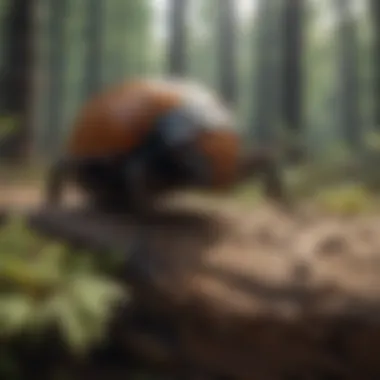
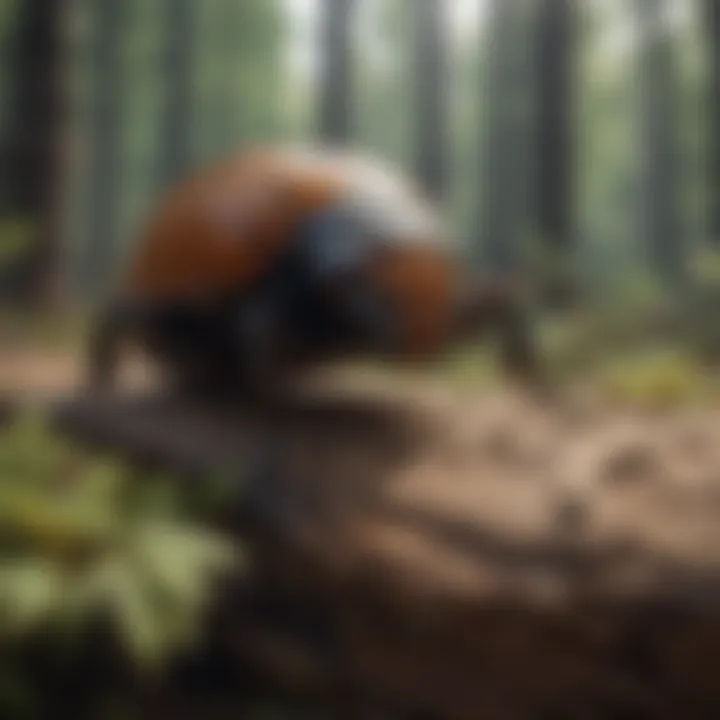
Taking a proactive approach to identifying infestations and accurately assessing damage can lead to more effective management strategies, ultimately ensuring the longevity and safety of wooden structures.
Impact on Structures and Environment
The ramifications of wood-destroying beetles extend well beyond the aesthetic realm of timber and structures; they bear significantly on the integrity of buildings and the surrounding ecology. This section seeks to unravel how these beetles not only compromise man-made environments but also influence economic aspects tied to those structures, ultimately setting a stage for broader considerations regarding pest management and conservation practices.
Structural Compromise
Wood-destroying beetles, such as the infamous Hylotrupes bajulus or the common powderpost beetle, can instigate serious structural damage. Their wood-burrowing activities are often stealthy, making early detection a challenging task. Over time, even a small colony can weaken support beams, flooring, and furniture, leading to potential safety hazards.
You might find this a bit startling; a single beetle can lay hundreds of eggs. After hatching, larvae burrow into the wood, creating an extensive network of tunnels. In fact, a well-established infestation might hide in plain sight for years, causing structural integrity to decline without any visible indicators.
It’s crucial to recognize the signs: small exit holes in the wood and the presence of fine sawdust can be telltale clues. Additionally, homeowners and contractors must be vigilant. Regular inspections and understanding the conditions that favor infestations—like high humidity and existing structural damage—are key to mitigating risks.
"Structural integrity is not just about beams and pillars; it’s about the life that surrounds and relies on them."
When structural compromise occurs, the costs escalate—not just in repairs but also in the potential for liability should a structural failure happen. Engaging pest control services at the first sign of infestation can save significant money and trouble down the line.
Economic Implications
The economic repercussions of wood-destroying beetles can be staggering. From a contractor's standpoint, a beetle infestation can lead to delayed projects, unexpected renovation costs, and even loss of business credibility. Insurance policies may not cover these types of infestations, leading to potentially hefty out-of-pocket expenses for homeowners.
An estimation from the National Pest Management Association suggests billions of dollars are spent yearly in the United States due to structural damage caused by these pests. That said, it’s not just the immediate costs that one must ponder. The long-term economic impacts can seep into the real estate market. Properties known to have beetle infestations often drop in value.
Furthermore, industries that rely on wood—like furniture manufacturers and construction companies—face direct disruptions to their supply chains. A single outbreak can ripple through the market, resulting in increased material costs and scarcities. Understanding these economic implications is essential for individuals and businesses alike, as every bite taken by these beetles can translate to significant financial loss.
In summary, the structural and economic impact of wood-destroying beetles is a multifaceted issue that requires careful attention. As we continue to probe into management and control strategies in later sections, it becomes evident that prevention is significantly more manageable and cost-effective than remediation.
Management and Control Strategies
Understanding how to manage and control wood-destroying beetles is crucial for anyone dealing with infestations, from homeowners to professionals in the construction and conservation sectors. Effectively mitigating the damage these pests can inflict is not just about minimizing financial loss; it's also about safeguarding the health of ecosystems. By implementing well-thought-out strategies, we can not only curb the immediate threat but also help with long-term ecological balance.
Management strategies can be categorized into preventative measures, chemical control options, and biological control methods. Each approach serves a purpose, and selecting the right tactic—or combination of tactics—can help protect wood structures and the environment.
Preventative Measures
The saying "an ounce of prevention is worth a pound of cure" couldn’t ring truer when it comes to wood-destroying beetles. Preventative measures can greatly reduce the risk of infestations. Here are several strategies to consider:
- Structural Integrity: Ensure buildings are well-maintained, addressing any leaks or damp areas quickly. Wood that stays moist is a magnet for beetles.
- Proper Storage: Store firewood and wooden materials away from structures, ideally in elevated areas that are also dry. This practice keeps potential pests at bay.
- Material Treatment: Use treated wood in construction projects, especially in areas prone to infestations. This simple step can be a game changer.
- Regular Inspections: Conduct inspections of wooden structures periodically. Early detection of any signs of beetles can save significant repair costs.
By being proactive, you significantly decrease the likelihood of facing an infestation, which can lead to extensive damage and costly repairs.
Chemical Control Options
When preventative measures fall short, or when an infestation has already taken hold, chemical control options may be the answer. While chemicals might seem like a quick fix, they come with their own set of considerations. Here’s what to consider:
- Insecticides: Products like borate-based solutions are often used for treating existing infestations. They're relatively safe for humans and pets when applied correctly, yet they can be effective at killing beetles on contact or through ingestion.
- Fumigation: For severe infestations, fumigation may be necessary. This method involves sealing the structure and releasing a gas that permeates, killing pests in all stages of life. It's effective, but it often requires a professional.
- Follow-up Treatments: Chemical control isn’t always a one-and-done deal. Often, follow-up treatments are needed to ensure that any remaining beetles are dealt with.
Natural Predators and Biological Control
If the thought of chemicals makes your skin crawl, consider exploring natural remedies. Biological control methods harness nature's own strategies to combat wood-destroying beetles. Some noteworthy aspects include:
- Beneficial Insects: Predatory beetles and parasites, such as the Tetrastichus species, can help control beetle populations effectively. They paralyze beetle larvae and infestations, acting as nature's exterminators.
- Nematodes: These microscopic worms can infect beetle larvae and kill them. Nematodes are a safe option for the environment, adding another layer of protection without harming beneficial insects or plants.
- Fungi: Certain fungi can also act as biological control agents, targeting wood-destroying beetles. Products containing Beauveria bassiana have shown promise in research settings and are a sustainable alternative to traditional methods.
By considering these natural approaches, you can not only protect your wooden structures but also contribute positively to the ecosystem, advocating for a balanced approach to pest management.
In summary, a multifaceted strategy that includes preventative measures, thoughtful use of chemical treatments when necessary, and natural controls can equip you to handle wood-destroying beetles effectively. Each action counts towards maintaining structural integrity and ecological health.
Research and Advances
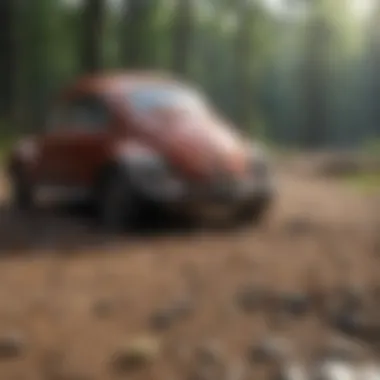
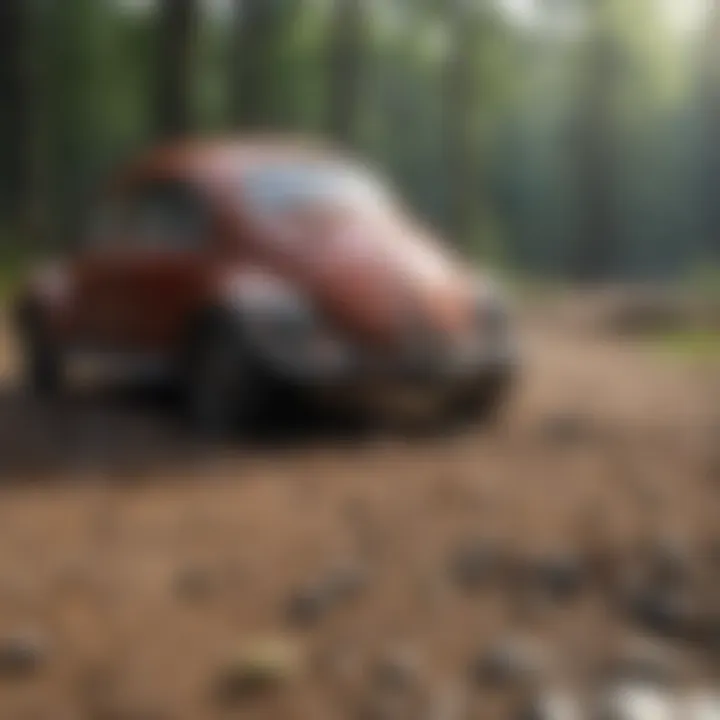
The study of wood-destroying beetles is gaining significant traction, owing to the multifaceted challenges they present across various ecosystems. Research and advances in this field are crucial not just for pest control but also for understanding broader ecological impacts. As these beetles are integral parts of their environments, the latest findings can provide insights into managing their populations effectively, which is beneficial for the environment as well as human endeavors. Moreover, unraveling the complexities of their behavior, life cycles, and susceptibility to various control methods allows for more tailored and efficient strategies.
Current Research Trends
Contemporary research is predominantly focused on a few key areas: the life cycle of wood-destroying beetles, their interaction with host trees, and the implications for climate change. Understanding the nuances of their life cycles can shed light on when vulnerabilities exist, guiding the timing of control measures. Furthermore, studies are examining how climate fluctuations affect beetle populations, including their spread into new territories or changes in their reproductive cycles.
One remarkable trend is the shift toward genetic research. Scientists are delving deep into the genomics of these pests, seeking to identify genes that might influence their resistance to certain treatments or their adaptability to changing environments. Interestingly, some studies have begun to point out the connection between the diversity of beetle species and the resilience of forest ecosystems.
- Key Areas of Interest:
- Life cycle dynamics
- Ecological roles in forest health
- Impact of climate change
- Genetic research on resistance traits
Technological Innovations in Control
New technologies play a pivotal role in managing wood-destroying beetles. Innovations range from advanced monitoring systems to more eco-friendly control measures. For instance, researchers are employing pheromone traps that mimic the scent of female beetles to lure and capture males, thereby disrupting their mating cycles. This method is particularly effective because it minimizes chemical usage, which can have unintended side effects on non-target species.
Another exciting area of technological advancement is the application of drones for surveying affected areas. Drones equipped with thermal imaging can detect wood damage not visible to the naked eye, helping to assess infestations early on. This use of drone technology allows forest managers to intervene before infestations reach critical levels.
The evolving landscape of control strategies signifies a move toward smarter and more sustainable approaches in pest management.
- Emerging Technologies:
- Pheromone lures and traps
- Thermal imaging drones
- Genetically modified organisms for biocontrol
- Data analytics for predictive modeling
Case Studies
Case studies serve as a crucial element in understanding the management of wood-destroying beetles. They offer real-world examples that elucidate the theoretical aspects of beetle behavior, infestation, and control strategies. By examining specific scenarios, we can glean insights into successful interventions and the complications that may arise. Case studies bridge the gap between abstract concepts and tangible practices, enhancing our understanding of how these pests interact with their environment and the measures that can be taken to mitigate their impact.
Through detailed examination, these case studies help identify effective methods, reveal common pitfalls, and highlight the importance of adaptability in pest management. The value lies not merely in their conclusions but also how they illustrate the journey taken — the tactics employed, the responses observed, and the revisions implemented based on initial outcomes. Considerations such as the ecological context, the choice of materials, and the timelines of interventions are crucial factors in crafting effective management strategies.
"The best lessons come from the experience of others. Case studies provide context to the strategies that are not only ideal in theory but also practical in application."
Successful Management Examples
In this section, we review various instances where interventions led to success in managing wood-destroying beetle infestations. For example, in a notable case in the Pacific Northwest, a lumber mill faced severe issues from the Western Wood-Root Beetle. Here, immediate action was taken to implement a comprehensive strategy that included:
- Regular Monitoring: Establishing a schedule for inspecting wood products, especially in vulnerable areas like storage stacks.
- Strategic Treatments: Application of targeted insecticides, specifically formulated for the species identified, which reduced beetle populations substantially.
- Community Engagement: Involving local timber businesses in awareness campaigns that promoted both identification and preventative measures.
The results were tangible. Over a short period, the infestation levels dropped, resulting in cost savings and a return to normal operations. Moreover, the initiative fostered a culture of vigilance and proactive management in the local wood industry, a lesson that can resonate in various contexts.
Failures and Lessons Learned
Not all case studies yield positive results. Investigating failures is equally crucial as it lays bare the limitations of certain approaches while emphasizing the need for a multi-faceted strategy. For instance, a significant project aimed at combating the Drywood Termite in a historic structure fell flat due to a lack of understanding in several areas:
- Misdiagnosis: The initial approach targeted the wrong species, wasting time and resources.
- Inadequate Planning: A one-size-fits-all treatment was employed without considering historical preservation needs, leading to damage not just from the pests but also from aggressive treatment methods.
- Lack of Follow-Up: Post-treatment inspections were neglected, allowing the problem to resurface.
From this failure emerged crucial lessons regarding the specificity of the treatment, the importance of detailed assessments before action, and the necessity of proper follow-up strategies. As the saying goes, “You learn more from failure than from success; it’s how you build your resilience.”
End
Understanding the behavior and management of wood-destroying beetles is vital for multiple reasons. First off, it sheds light on not just a pest problem but also the risks associated with infestations, which can undermine the integrity of structures. As we've seen throughout this article, these insects impact not only individual homeowners but also larger sectors such as construction and conservation. Their role in ecosystems adds another layer of complexity, as they contribute to nutrient cycling and help in the decomposing process, turning dead trees into value for the soil.
Key findings from our exploration highlight the intricate balance between the ecological roles of these beetles and the damage they can inflict. Infestations can lead to exorbitant costs, but they also provide insight into how we manage wood resources in a sustainable way. In essence, the risks and benefits are part of a greater conversation on environmental stewardship and responsible property management.
Summarizing Key Findings
- Diverse Species: Various species of wood-destroying beetles exist, each with unique characteristics and behaviors. The complexity of these pests necessitates accurate identification and tailored management strategies.
- Life Cycle Understanding: Knowledge of their life cycle stages is crucial for effective control measures. Breeding and development inform the timing of interventions, often determining their success.
- Infestation Symptoms: Recognizing signs of infestation early can save significant expense and effort. Homeowners and professionals alike need to be aware of typical indicators.
- Impact Beyond Buildings: The significance extends to economic implications for industries reliant on wood. Addressing infestations prevents costly damages and promotes healthier ecosystems.
"The balance between pest control and ecosystem health is a fine line. Understanding that can lead to better decisions for everyone involved."
Future Directions in Research
Looking ahead, there are several focus areas that warrant further investigation:
- Innovative Control Methods: Continued exploration into non-toxic control options could benefit both the environment and pest management. This includes understanding biological controls and pheromone traps more deeply.
- Climate Change Effects: How changing climates affect the distribution and behavior of wood-destroying beetles is a growing concern. Researchers would do well to study correlations between temperature, humidity, and beetle activity.
- Technological Applications: Utilizing technology such as remote sensing and advanced monitoring systems could revolutionize how we detect and respond to outbreaks. Integration with smart home technologies also offers potential.
- Ecological Research: Further studies on the ecological roles of these beetles can guide sustainable management practices, blending ecological understanding with practical pest control.



